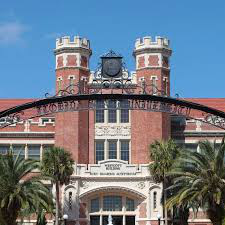Speaker
Description
First proposed by Nobel laureate Weinberg in the early 1990s, the so-called Weinberg chiral nuclear force has become the de facto standard for ab initio nuclear structure and reaction studies. However, unlike atomic physics and chemistry, the application of relativistic ab initio methods in nuclear physics is just emerging. An important factor hindering their development is the lack of modern relativistic nucleon-nucleon interactions. To provide the most wanted inputs for relativistic nuclear structure and reaction studies and to better understand the non-perturbative strong interaction, we proposed the construction of a relativistic chiral nuclear force in 2016[1,2]. After many years of extensive studies [3,4,5,6], we have obtained the first high-precision relativistic chiral nuclear force [7]. This talk will introduce its main features and discuss about its future applications and further development.
References
[1] X.L. Ren, K.W. Li, L.S. Geng, B.W. Long, P. Ring and J. Meng, Chin. Phys. C 42, 014103(2018).
[2] K.W. Li, X.L. Ren, L.S. Geng and B.W. Long, Chin. Phys. C 42, 014105 (2018).
[3] Y. Xiao, L.S. Geng and X.L. Ren, Phys. Rev. C 99, 024004(2019).
[4] J.X. Lu, L.S. Geng, X.L. Ren and M.L. Du, Phys. Rev. D 99, 054024(2019).
[5] Y. Xiao, C.X. Wang, J.X. Lu and L.S. Geng, Phys. Rev. C 102, 054001(2020).
[6] C.X. Wang, J.X. Lu, Y. Xiao and L.S. Geng, Phys. Rev. C 105, 014003(2022).
[7] J.X. Lu, C.X. Wang, Y. Xiao, L.S. Geng, J. Meng and P. Ring, Phys. Rev. Lett. 128, 142002(2022).
| speaker affiliation | Beihang University |
|---|

